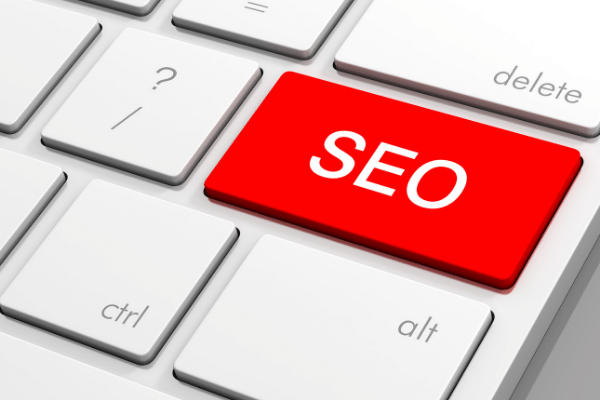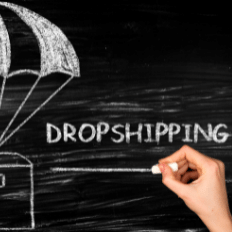Shopify has become the go-to e-commerce platform for everyone that wants to enjoy online success with all the accurate tools.
However, as beautiful and efficient as Shopify is, it is nothing without SEO for Shopify to reach the greatest numbers you want and envisage for your business.
We have all been there.
When you think you have everything in check, but you are invisible despite all the tools and accessories at your disposal.
There is no doubt that Shopify has several in-built SEO tools and alliances with numerous third-party SEO apps and integrations to help your store better.
If SEO looks or feels like rocket science, we understand, and that is why there is Ecomitize. We have professional e-commerce experts to simplify the process and make your Shopify store the best online store ever.
However, as you are thinking of contacting us, we recommend reading through these Shopify SEO tips on how to improve SEO on Shopify yourself.
If you experience any technical glitch, Ecomitize is just a click away.
So let’s get started.

So you have utilized the tools on Shopify to set up your online store. Wow, congratulations, but there is a problem.
The beautiful store (we are sure it looks better than the one in the image) has no customers.
No one is visiting, and suddenly your dreams as a successful entrepreneur are looking hopeless than hopeful.
We have been there. When nothing seems to be working, no matter how much you work. Well, do not give up yet. Shopify SEO should do the trick.
Now before we go any further, remember this point. Your online store starts on a search engine, buyers start on search engines, your interaction is on a search engine, and so if you have not made SEO a priority, then you are not prepared for online/e-commerce success.
So rather than sit back and hope that someday Google will notice your effort, how about doing something about it.
We know it is frustrating. However, before you throw your hands up in defeat, this is the solution you need – SEO for Shopify.
What is SEO for Shopify?
Whether on Amazon, eBay, or Walmart, there are SEO tips to enable their customers to succeed on their platforms.
Shopify has its own unique SEO improvement to help you gain better visibility, sell more, and increase your SEO ranking on search engines.
Remember, Shopify comes with countless Shopify SEO tools like Shopify themes, Shopify Meta tags, and many others.
But is it enough to get you to the top?
So, to achieve this success, you must speed up your Shopify store by improving the Shopify SEO.
Shopify Sitemap
We are starting here because Shopify has everything, but the processes you do not see are equally as vital to the success of your store.
Do not fret yet. This is easy. The sitemap is a file that contains all vital pages of your online store and shares them with search engines like Google by narrating the connection between each page.
Your Shopify sitemap file informs search engines pages to index, crawls, and generates links for all the pages too.
The Shopify sitemap is of two types: the HTML for users and visitors to your page and the XML sitemap for search engine bots like Google and Bing.

The XML sitemap also termed the Child sitemap deals with collection pages, marketing pages, blogs, and product pages.
The technicalities of creating a Shopify sitemap are confusing if you do not have the know-how. So to save you all the trouble so that you can focus on building your storefront, Ecomitize will take care of it.
Shopify URL Redirects
Have you ever visited your favorite online page or clicked on a product and get a 404 or page not found error message staring bolding at your face?
It is frustrating.
As your Shopify store expands, circumstances happen. Products are moved to other sites, blogs are created to boost product and page visibility, and several other pages are deleted, altered, or have their URL updated.
This is good.
However, if you have changed the address to your home, it is best to let the postal service know so that your mails do not come to the old house.
Does this explain the reason for a Shopify redirect? And how does this relate to Shopify SEO?
A lot! If your website or pages have no proper link connection or redirection, Google automatically assumes the links are broken.
The penalty for such an assumption is a decrease in your online visibility and page ranking on search engines.
So a Shopify URL redirect or a 301 is a permanent redirect process that takes your visitors to the new page to avoid the 404 error messages or the penalties imposed by Google or other search engines.
To create a Shopify URL redirects, follow the instruction here, or contact Ecomitize to get all your pages redirected properly.
Homepage, Titles, and Meta Description Shopify
Your titles and Meta descriptions are referred to as On-Page SEO and their job is to improve your site ranking using various factors like images, text, HTML tags, and user-friendliness.
Your homepage is the first place your visitors land when coming to your website. If this is not appealing, they will immediately leave and ask others not to visit too.

The homepage should give an overall summary of what your website offers and details to make navigating it easy. Your title tag and Meta description are two factors vital to your store’s success. While Google search engines make Meta titles and descriptions look deceptively easy, it is not. Let us use the example above to analyze how a title and description should turn out.
A Meta title has a maximum of 60 characters and should tell the visitor all about your company or product. In the above, it is Death Wish Coffee Company – World’s Strongest Coffee.
The title says it all.
Next is the URL that redirects visitors to their website or product page, as the case may be. The description below the URL is the Meta description. This is a 130 – 160 character that literary sells your brand and emphasizes on the title.
The title and Meta description are indicators of what you do and how you do it. Search engines like Google use them to classify the page and rank them accordingly. Search engine and Shopify SEO is vital, as it helps users and visitors to find your page and gives them a heads up about the page.
How to optimize your homepage title and Meta description?
From your Shopify dashboard, click preferences on the left-hand side
- Fill in the space marked Homepage title and Meta description
- Do not forget to use the appropriate keywords in your titles and descriptions.
- Additionally, to boost sales employ unique features like promo codes or offers that differentiate you from the competition.
- The same title and Meta description should be employed when writing your product description.
An example is shown below: the areas marked in red indicate the Meta title and description, respectively.

Shopify SEO Tips to Optimize Your Homepage for Search Engines
- Always include the main keyword that describes your company, store, or product in the title and description
- Use keyword optimize images and alt images to boost the title and description
- Ensure user readability on all content
- Do not overcrowd your homepage with fluffs, uninformative texts, or images
- Use URL redirects to send the customer to pages that reveal more information
- Ensure the homepage content has a minimum of 300 and cover all information the user needs to take the next step
Improving Shopify SEO to boost traffic and sales
The reason for starting a Shopify store is to make sales and grow the store in the future. For Shopify sellers to take full advantage of this is to employ Shopify SEO. In addition to the above-listed SEO tips, the following should help
Optimize the site structure
The proper site structure helps search engines and the user navigate your page. Additionally, when your Shopify site is well-mapped, it will rank higher and get better comments from visitors too.

The hierarchy shown in the image above is a simple structure to boost your page visibility and SEO ranking.
Shopify Speed Optimization
Imagine you walk into a store to buy something, and it takes the shopkeeper minutes or an hour to open, set up, and then attend to you.
Would you return even if you waited the whole time?
Well, obviously not!
Guess the popular saying that Slow and steady wins the race does not work in this case.
Now, imagine this same scenario with an online says your Shopify store. We know you are aware of the impact of speed but let’s refresh your memory;
- Less conversion rate
- Fewer visitors returning
- More abandon carts
- High bounce rate
- Less traffic
- No revenue
- Low SEO ranking
The following might help to speed up your Shopify site:
- Use lighter themes and images or compress them
- Make your page mobile-optimized
- Do not add any program you are not using
- Use URL redirect links to send the visitor to a page where they get more information and take action
When speed is top-notch, customers’ frustration is reduced, and your store gets the required traffic and makes sales too.
Research Target Keywords

We cannot talk Shopify SEO without keywords. In fact, there is no SEO without keywords, as they are the building block of any successful online entrepreneur.
Now the best way to comprehend SEO keywords is using the various apps. It gives you an insight into what visitors are looking for or be in the customer’s shoes and gets a perspective of what they search for.
For example, imagine a customer is online looking for scarves. The customer can input handmade scarves, wool scarves, holiday scarves, and many others.
If your store sells scarves, you must get into the nitty-gritty of the product and get the appropriate description for it.
Another way to generate effective SEO keywords is using question-related Shopify Meta tags to create structure and definite keywords.
Once you have decided on the keyword, you can use keyword tools like Ahrefs to reveal the volume search and then utilize it as required.
Create High Quality Content

Reaching your customers at all the marketing stages involves high-quality content that will increase traffic, improve your Google ranking and increase sales. There are several benefits to blogs, including giving more valuable information about the products on your website and redirecting them to your page using the necessary links.
The more content you publish, the higher your chances of establishing authority in a particular niche. It also enables you to make a sale with every post.
But there is one benefit of creating content for your page, BACKLINKS.
Google uses backlinks to rank the website and tell search engines your website is legitimate and the shop owner can be trusted.
Want to know more about Shopify SEO? Contact Ecomitize today.
Conclusion
Finally, we have journeyed through some basic Shopify SEO checklists to ensure your store is updated and ready to withstand the obstacles in the e-commerce industry.
Some say to add all the apps you can to boost your Shopify store. It will choke your website and reduce speed, causing your page to stall and lose visitors.
Thus, it is safe to say that you should only install Shopify SEO tools useful to your store.
Remember, building an e-commerce store is not a day’s job. It takes time and apt knowledge of the right Shopify SEO tools. Additionally, it will take a couple of months to see the results of implementing SEO for Shopify.
As the world of e-commerce evolves, it is getting harder to rank on Google or ignore the significance of SEO for an online store.
Does your Shopify store need to boost its SEO features? Well, you have come to the right place. Contact Ecomitize and leave a message.



